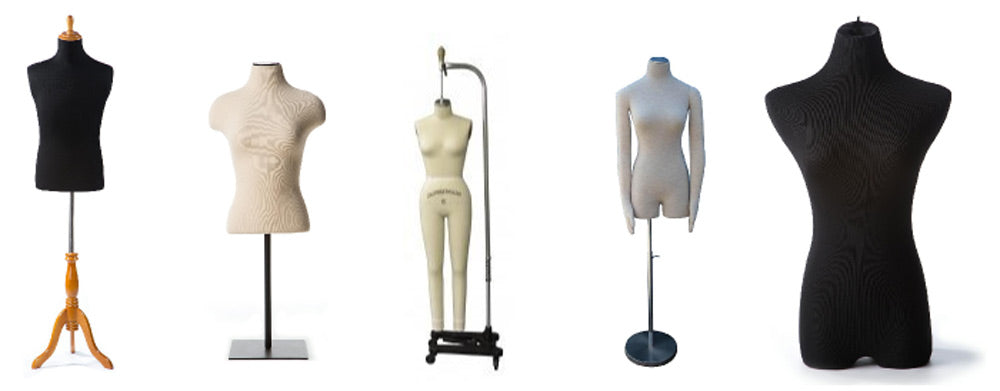Your Cart is Empty
Free Shipping On All Orders In December - No Coupon Code Necessary
Free Shipping On All Orders In December - No Coupon Code Necessary
Free Shipping On All Orders In December - No Coupon Code Necessary
Free Shipping On All Orders In December - No Coupon Code Necessary

September 22, 2017 3 min read
We suppose you heard a lot of things about dress forms. It is even possible that you already own at least one. But have you ever wondered what a dress formis, and what is the difference between it and a mannequin? Now it is time to get a short overview of the dress forms, so read on to find out some things that could possibly help you in future.
How is a dress form different than a mannequin?
Although everyone keeps talking about the differences between a dress formand a mannequin, the truth is that there have more things in common than differences. The dress formis inspired by the human body and it is designed in realistic proportions. It is used to display clothing, and the same thing is available for the mannequin. But now let’s see the difference between them.
A dress formis made with a layer of foam and cloth on top of its inner shell. This is one of the reasons that lead to the use of the dress formsin the service of tailors. In the past, tailors generally used the dress formto build a dress or another piece of clothing around. During this process, they needed to stick a pin through the fabric and into the dress formto hold the fabric in place. This is why the dress formhas a layer of foam. The layer of cloth is used for reasons of aesthetics, as well as to hold the foam in place.
A mannequin is made of a hard material, such as plastic, fiberglass or metal. The mannequin is not created for any purpose of sewing application, but it is solely designed to be used to display clothing on it.
Although many people think that a difference between dress formsand mannequin is the head or limbs, it is completely wrong. Dress forms, as well as mannequins, have various designs and models, so in both cases, they can have heads, arms or legs, as well as they can miss them.
What is the dress form used for?
The dress formis widely used by tailors worldwide. In the past, tailors were also apparel retailers, so they also used the dress forms to showcase their newly made clothing. As the time passed, much of the clothing manufacturing was moved to larger factories that only manufactured clothing, but these factories weren’t in the business retailing to actual customers. During those times, clothing retailers continued to showcase their garments on dress forms.Nowadays, dress forms have quite an elegant look, so there are still many retailers who prefer using dress forms for showcasing their apparel, rather than mannequins.
The difference between classic and professional dress forms
The classic dress form is designed with high attention to its appearance, so this is why clothing retailers also use it, as well as the tailors. The professional dress form is designed purely for tailors.
Partially pinnable versus fully pinnable
Partially pinnable dress formshave a thin layer of foam between the shell and its jersey exterior. On the other hand, fully pinnable dress formshave a much thicker and harder layer of foam. Although both models can be used with pins, the fully pinnable form takes pins straight in, while the partially pinnable one can only take pins inserted sideways. The partially pinnable models are strong, but the fully pinnable ones are even stronger.
Single connectors versus dual connectors
There is another difference between the partially pinnable and fully pinnable dress forms.This difference is the connectors, which can be single or dual. The connector is the area where the pole from the base connects with the torso of the dress form.The partially pinnable models have two connectors on the bottom of the torso, one of them in the center, and the other one off to the left. On the other hand, the fully pinnable forms only have a connector, which can be either in the middle or in the left leg.
In the end
As you can see, there are a few differences between dress formsand mannequins. While the mannequins are solely used for showcasing apparel, the dress forms are also used to create garments. As in what regards dress forms, they are available in a large variety of models, which allow the tailors and retailers to use them as required by their specific needs.